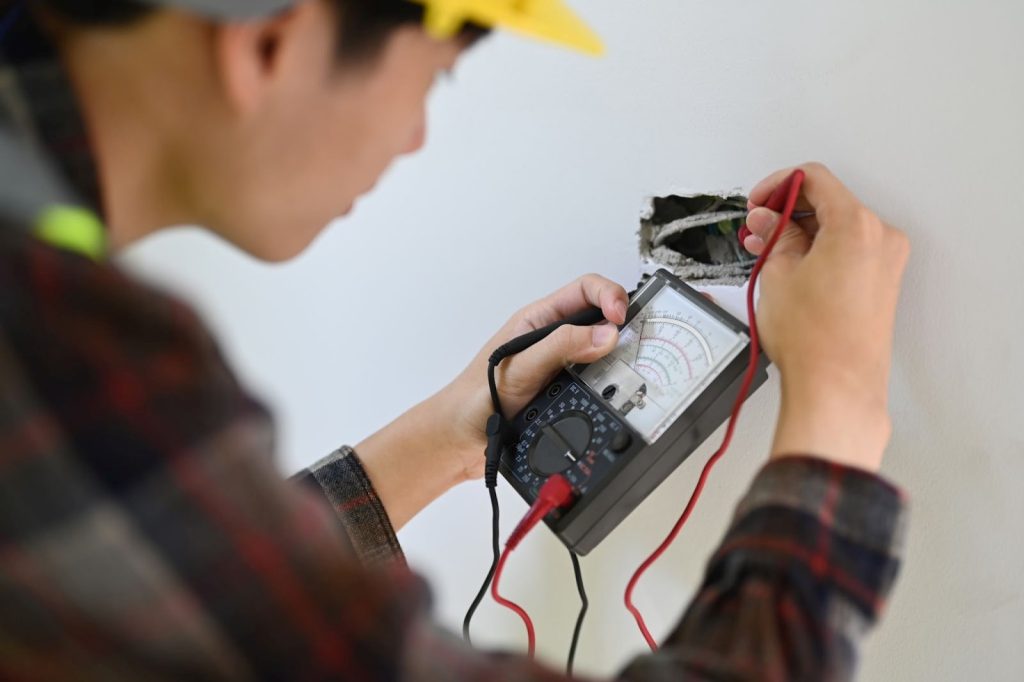Legionellosis refers to a group of diseases caused by Legionella bacteria, including the most severe Legionnaires’ disease and the less dangerous Pontiac fever. Everyone is susceptible to Legionnaires’ disease, which is a potentially lethal form of pneumonia. The risk increases significantly with age but some people are more vulnerable:
- People over 45 years of age
- Smokers and heavy drinkers
- People suffering from kidney disease or chronic respiratory
- People with diabetes, lung or heart disease
- Anyone with an impaired immune system
Legionella pneumophila and similar bacteria are found in abundance in natural water sources such as rivers, lakes, and reservoirs, although in small numbers. If the conditions are favourable, the bacteria may multiply, increasing the danger of Legionnaires’ disease. It is therefore critical to keep the hazards under control by implementing proper precautions.
What is Legionnaires’ disease?
Legionnaires’ disease is a severe form of pneumonia, which is an infection of the lungs. This infection is caused by Legionella bacteria. After an outbreak at an American Legion meeting in 1976, the bacteria was found. Those who were infected developed Legionnaires’ illness, a type of pneumonia that was later named after them.
Warm water is ideal for Legionella bacteria to prosper. By inhaling contaminated droplets of water in the air, people become infected with Legionella. Water systems in hospital buildings, as well as whirlpool spas in hotels and cruise ships, have been connected to outbreaks.
Many people who are exposed to Legionella do not become ill as a result of their exposure. When illness does strike, though, it’s critical to consult a doctor as soon as possible. Legionnaires’ disease is a life-threatening condition that requires immediate medical attention.
Legionella also causes Pontiac fever, which is a lesser version of Legionnaires’ disease. Pontiac fever is not contagious and does not give rise to pneumonia. It has symptoms that are similar to a moderate flu and normally clears up on its own. Legionellosis is a term that refers to both Pontiac fever and Legionnaires disease.
How often should water systems be checked for Legionella?
What are the most common symptoms of Legionnaires’ disease?
The most common symptoms of Legionnaires’ disease are similar to other types of lung infections, including:
- Cough
- Breathing difficulties
- Fever
- Muscle aches
- Headaches
Other symptoms connected to Legionnaires’ illness include diarrhoea, nausea, and confusion. Symptoms normally appear 2 to 14 days after exposure to the bacteria, although it can take up to 30 days.
If you develop signs of pneumonia, consult a doctor as soon as possible. To find out if you’ve been exposed to Legionella, try remembering if you used a hot tub, drank from a water fountain, spent any nights away from home, or stayed in a hospital in the last two weeks.
What is the most common way of contracting Legionnaires’ disease?
People contract Legionnaires’ disease when they inhale microscopic water droplets containing Legionella bacteria. The most common way people enter into contact with this bacteria often has to do with:
- Hot tubs and whirlpools
- Cooling towers in air conditioning systems
- Hot water tanks and heaters
- Fountains
- Swimming pools
- Drinking water
Aside from inhaling water droplets, the virus can be spread in a variety of ways, including:
- Soil: some people have contracted Legionnaires’ disease after gardening or using contaminated potting soil.
- Aspiration: this happens when liquids enter your lungs by mistake, commonly as a result of coughing or choking when drinking. Legionnaires’ disease can be contracted by aspirating water contaminated with legionella bacteria.
Legionella risk assessment cost
Who is most at risk for Legionnaires’ disease?
Not everyone who comes into contact with Legionella germs gets sick. If you do any of the following or have a health condition mentioned below, you’re more likely to contract the infection:
- Smoke: smoking affects the lungs and makes you more prone to lung infections of all kinds.
- Compromised immune system: HIV/AIDS or certain medications, particularly corticosteroids and pharmaceuticals used to prevent organ rejection following a transplant, might cause this.
- Serious condition or chronic lung disease: emphysema, diabetes, kidney illness, and cancer are all examples of this.
- Age: people who are 50 years or older are more at risk.
Legionnaires’ disease places of predilection are hospitals and nursing homes, where germs can quickly spread and people are sensitive to illness.
How do doctors diagnose Legionnaires’ disease?
Doctors diagnose Legionnaires’ disease with these tests:
- Blood and urine tests
- Chest X-rays are used to show the extent of infection in your lungs, but cannot confirm the presence of Legionnaires’ disease
- Tests on a sample of your sputum or lung tissue
The symptoms of Legionnaires’ disease are similar to those of other kinds of pneumonia. Your doctor may perform a test that analyses your urine for legionella antigens (foreign substances that cause an immune system reaction) to swiftly detect the presence of legionella bacteria.
What are common Legionnaires’ disease treatments?
Antibiotics are a common Legionnaires’ disease treatment. While waiting for confirmation, antibiotics such as levofloxacin, moxifloxacin, or macrolides like azithromycin are frequently taken. Prompt treatment reduces the likelihood of problems substantially.
Many people recover entirely with treatment, but the majority require hospitalisation. Legionnaires’ disease is particularly dangerous to the elderly and individuals who have other health problems. When severe, patients are given oxygen or other breathing assistance solutions while in the hospital. To treat dehydration, they may be given fluids and electrolytes through an IV.
How long does it take to recover from Legionnaires’ disease?
If the patient is treated with appropriate antibiotics near the start of the pneumonia, the outcome is excellent, especially if the patient has no existing conditions that compromise his immune system. The recovery can take between 1 to 3 weeks.
However, delaying adequate therapy for individuals with impaired immune systems, such as transplant recipients, can lead to prolonged hospitalisation, complications, and death. Many patients who are discharged from the hospital feel exhaustion, loss of energy, and difficulties concentrating for several months after discharge.
In a long-term study of 122 survivors of Legionnaires’ disease, symptoms of fatigue (75%), neurologic symptoms (such as concentration problems and malaise) (75%), and neuromuscular symptoms (such as joint pain or muscle weakness) (79%) had remained 17 months later (source).
Respiratory tract symptoms were also evident, but in lower frequency including cough (48%) and shortness of breath on exertion (38%). It could not be ascertained whether or not the persistence of these symptoms was due specifically to Legionnaires’ disease or to severe pneumonia, in general.
Can Legionnaires’ disease be prevented?
Legionnaires’ disease can be prevented in both residential and commercial settings if these 7 points are implemented:
- Appoint a dedicated hygiene manager
- Do a risk assessment
- Flush little-used outlets
- Remove dead legs
- Monitor temperature
- Take regular samples
- Chlorinate the system
1. Appoint a dedicated hygiene manager
This does not have to be a newly hired manager; instead, it could be a role allocated to an in-house employee or outsourced. This should, however, be one of the first procedures taken to avoid Legionella. It’s an important job to keep track of all the water systems and perform the necessary checkups and treatments. Appropriate training is necessary to ensure that the maintenance performed is adequate.
2. Do a risk assessment
Risk assessments are essential for preventing Legionella growth. Any minor risk of Legionella should be detailed in a risk assessment. Little-used outlets (disabled toilets are typically at risk) are things to keep an eye out for during a risk assessment. Because a full risk assessment is required, it is usually preferable to hire a business that specialises in this, and that possesses the required certification.
Commercial Legionella risk assessment
3. Flush little-used outlets
As previously stated, Legionella can thrive in little-used outlets. This is because if they aren’t used, the water might stagnate, resulting in a Legionnaires’ disease outbreak when someone uses it. To keep the water from stagnating and Legionella from prospering, flush these infrequently used outlets at least once a week.
4. Remove dead legs
Dead legs are basically sections of potable water piping systems which have been abandoned, altered, or capped so that water can’t flow through them. Because the water is normally room temperature and prone to stagnation, dead legs are a breeding habitat for Legionella bacteria. When the water slowly returns to the system, this might become very harmful. Removing dead legs should only be done by a professional plumber.
5. Monitor temperatures
When it comes to Legionella, temperature is crucial. Legionella thrives in temperatures ranging from 25 to 45 degrees Celsius. As a result, the temperatures in hot and cold systems should be checked regularly. If the temperature of your cold water fluctuates, the cold water line is heating up somewhere. This could be due to the pipe being close to a hot water pipe or a heater. The hot water heater may need to be turned up if the hot water isn’t hot enough. Any temperature changes should be reported to a plumber immediately.
6. Take regular samples
This may seem self-evident, but it is critical in preventing Legionella growth. After all, how do you know you are preventing Legionella growth if you aren’t monitoring for it? This should be performed by experts because it necessitates sending samples to a laboratory to be tested for Legionella. If your sample is positive, you’ll be able to pinpoint exactly where Legionella is developing, and you’ll be able to reassess that area.
7. Chlorinate the system
Every six months to a year, the system should be chlorinated. The system will be drained, chlorinated, flushed, and refilled at this point. This destroys any leftover Legionella bacteria and thoroughly cleans the system. If your water system is prone to Legionella, this is the best procedure to follow.
What is the mortality rate for Legionnaires disease?
One out of every ten people who contract Legionnaires’ disease die as a result of the disease (source). Approximately 1/4 of people who contract Legionnaires’ disease while in a healthcare facility die (source).
Further information, advice, and support
Legionella Risk and PAT is a commercial and domestic Legionella risk assessment and portable appliance testing service provider in Scotland. We offer a comprehensive range of Legionella control and environmental solutions including legionella risk assessment, training, and water testing for the control of Legionella, pseudomonas, and other waterborne pathogens in your home or workplace.


